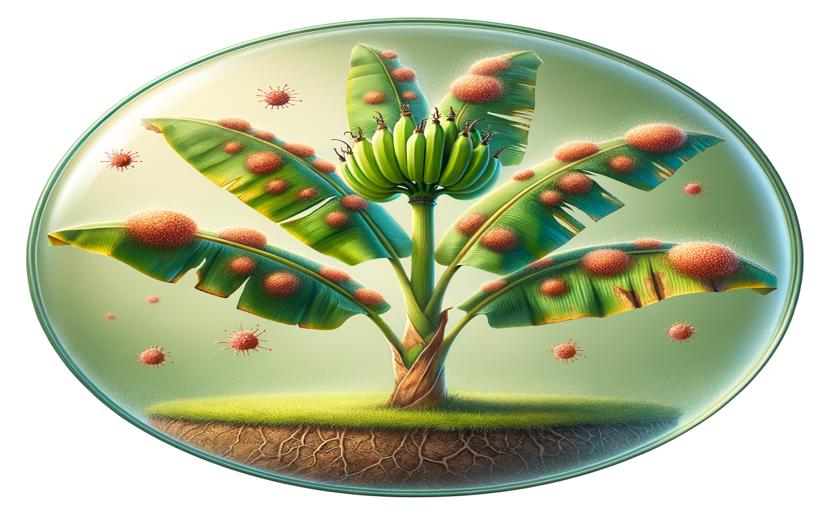
New Virus Found to Reduce Harmfulness in Banana Plant Fungus
Greg Howard
17th July, 2024

Image Source: Natural Science News, 2024
Key Findings
- This study, conducted by the Guangxi Academy of Sciences, focuses on a novel mycovirus, Hadaka virus 1 strain LA6 (HadV1-LA6), found in the fungal pathogen Fusarium oxysporum f. sp. cubense (Foc)
- HadV1-LA6 significantly reduces the growth rates of Foc under cell wall stress and oxidative stress conditions
- HadV1-LA6 also decreases the virulence of Foc in banana plants, presenting a promising biocontrol method for managing Fusarium wilt of banana
References
Main Study
1) A novel hypovirulence-associated Hadaka virus 1 (HadV1-LA6) in Fusarium oxysporum f. sp. cubense.
Published 16th July, 2024
https://doi.org/10.1128/msphere.00428-24
Related Studies
2) Fusarium Wilt of Banana.
3) Mycoviruses and their role in fungal pathogenesis.
4) Viruses of fungi and oomycetes in the soil environment.
5) New Insights on the Integrated Management of Plant Diseases by RNA Strategies: Mycoviruses and RNA Interference.



 8th March, 2024 | Greg Howard
8th March, 2024 | Greg Howard